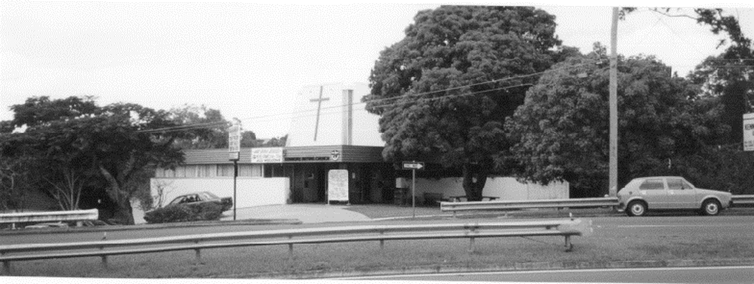In the post-war decades, Australian communities invested heavily in church buildings.
Like civic centres, swimming pools and shire halls, these buildings made an important contribution to the formation of a modern civic realm in Australia’s growing cities, suburbs and regional communities.
Today, dwindling numbers of constituents and the amalgamation of congregations place many post-war church buildings at risk.
And yet – unlike their publicly funded counterparts – these buildings are largely ignored in architectural and heritage discussions. Few church buildings have any form of heritage protection. Could this be because this is an “uneasy heritage”?
Given current crises affecting the churches in Australia, and given the important role of these buildings in the post-war development of our cities, suburbs and towns, a public debate is necessary about their future. Should we allow these buildings to disappear from memory, or should they be preserved and/or repurposed?
For the whole of Australia only about 30 post-war ecclesiastical buildings are included on state heritage registers. It’s a meagre number, given that several thousand churches were built across the country during the 1950s, 1960s and 1970s.
In Queensland alone, over 1,000 were built between 1945 and 1975. Of these, only six are on the Queensland Heritage Register.
Mirroring modern Australia’s emergence
In immediate post-war years, modern church building in Australia made a hesitant start. A few small, rather conventional buildings cropped up here and there.
In the 1950s, however, hesitation gave way to optimism and resulted in increasing experimentation in church design. By the 1960s a genuine modern church building boom was under way.
Religious institutions strongly supported the Australian government’s bid to build a modern social welfare state. They not only built community-oriented churches, but also kindergartens, halls, primary and secondary schools, charity outreach centres, hospitals, etc.
From the 1960s churches and their architects increasingly recognised the need to rethink ecclesiastical architecture to cater to (rather than ignore or shun) modern society. This aggiornamento, or bringing up to date, in the religious sphere coincided with architects’ experiments with modern materials and construction technologies and innovative shapes and forms.
As a result, a new “type” of church emerged. This was one more attuned to its (commonly) residential surroundings and more sensitive to its context, both in terms of materiality and scale.

Examples abound, but of note are:
- Kenmore Presbyterian Church by Robin Gibson (c.1968, Queensland), now Uniting Church
- St Anne’s Church of England by Hely Bell & Horne (c.1965, Como, NSW), which was repurposed in 1997 as a private residence along with its Sunday school building of the same age
- St Christopher’s Catholic Church by Paul Wallace (c.1968, Anglesea, Victoria), which was damaged in the 1983 bushfires and rebuilt in 1984 to a revised design.



